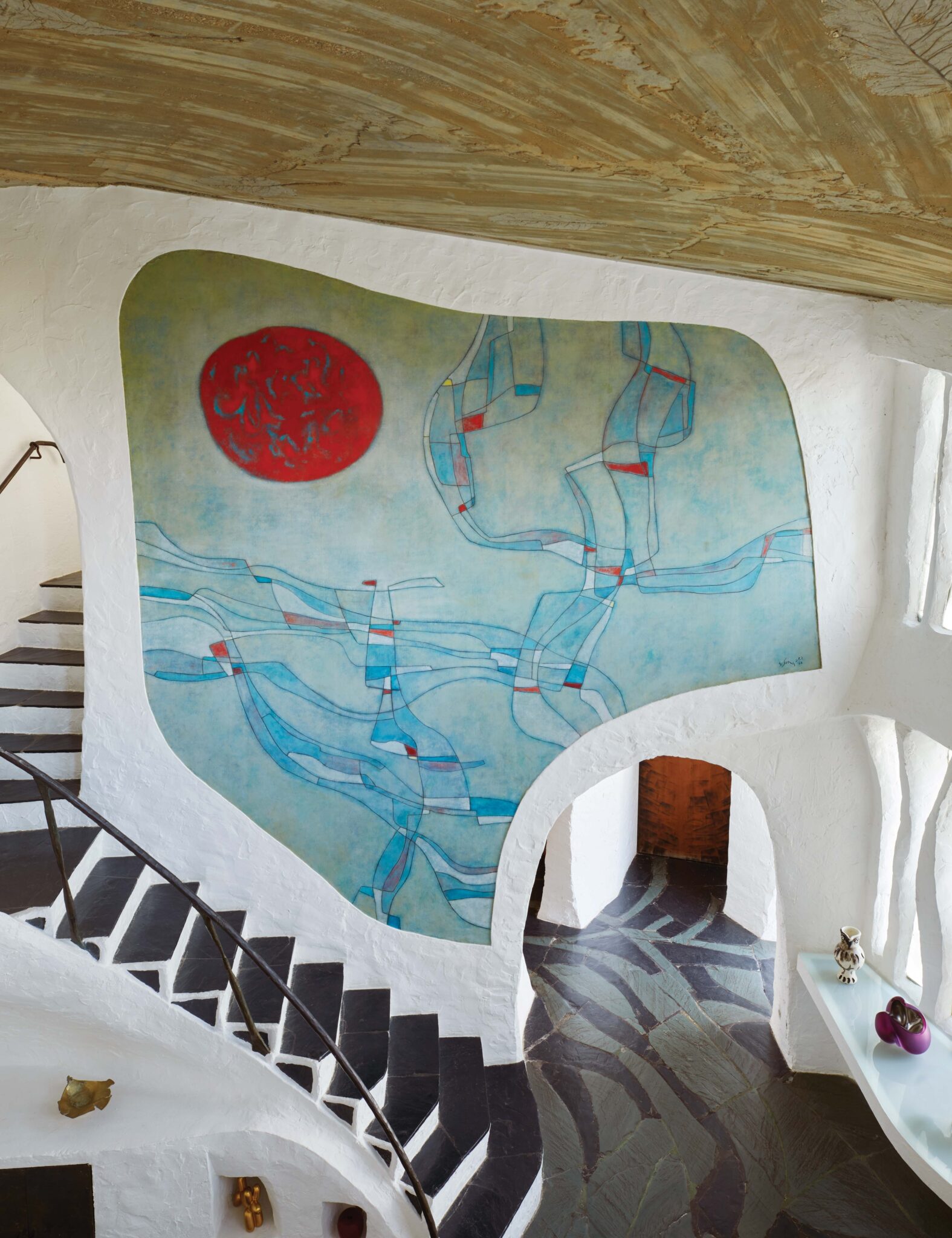In the 1980S, legendary architect John Portman broke ground on a private coastal retreat for his family—and the home completely blew the mind of a certain young neighbor named Miles Redd. Here, Redd explains why he fell so hard and fast for the structure, and how, after seeing Entelechy II, nothing would ever look the same again.

How do I even begin to describe my obsession with Entelechy II, John Portman’s modernist masterpiece on Georgia’s Sea Island? A little background information is in order to explain.
Sea Island is a small isle of thirty-six streets and a beach club, a kind of Hamptons to Atlanta. It is very preppy and a bit dressy—think coat and tie for bingo. Growing up going there with my family, it was extremely glamorous to me. As a child, it meant splashing in the ocean, endless sandcastles and gold brick sundaes (an ice cream-and-chocolate delicacy from the snack bar). As a teenager, it gave me my first taste of freedom: I drove around a rented moped, and sampled my first keg beer in a cul-de-sac where teenagers used to fraternize. It was vacation, and we looked forward to it with abandon and glee.

A swooping exterior staircase leads to the master suite’s patio. Thomas ibsen
I thought it was Cap d’Antibes, but it is really more like The Golden Girls. There are a few pretty houses, but mostly it’s a hodgepodge of ranch next to Mediterranean next to Bermudan, a suburban-feeling town of one- to two-acre lots. My dad called it living the dream, and I agreed, but I realize now that my dream had just begun. I had yet to come to New York City or do any of the travel that would really open my eyes, but such is life—what you once thought was incredible can dim a bit with hindsight.
But not the beautiful Entelechy II. It is a building that stands the test of time.
In the 1980s, Atlanta was booming, and consequently there was a lot of development on Sea Island. My mother and I used to wander through the empty construction sites (they were always open) and we were the ultimate critics: “Can you believe how prominent the garage is?” or “The master bedroom feels too big, the master bath feels too small.”

A dramatic courtyard and pool separate the east and west pavilions of the house.Thomas Ibsen
And then, in 1986, Mr. Portman started building his masterpiece. Alas, it was the one locked construction site on the island, so all we could do was peer from the street and beach. And what peeping Toms we were! My provincial eyes had never seen such scale and chic—cranes hoisting columns as tall as skyscrapers, enormous Giacometti-esque bronze figures dancing behind stucco walls, and so much glass and green and white. It was as if we had discovered the Millennium Falcon in the Amazon. The modernity! The restraint! The excess! The vision! The name alone captivated my imagination, though my sixteen-year-old self was sadly mispronouncing it, saying EN-TU-LECHY instead of the correct EN-TELL-A-KEY, a Greek word meaning the soul.
And, oh, the chatter it caused. All the naysayers thought it was so inappropriate. People are always afraid of something they don’t understand. Humankind is quick to dismiss the freaks of nature, but freaks of nature have a tendency to turn into Lady Gaga. Time has a way of revealing genius, and Mr. Portman was one to be sure. The house has only gotten better over the years, still sculptural and strong but somehow now seamlessly dissolving into a lush, green landscape that seems virtually transported from the jungle.
Entelechy II let me know at a young age that if you have a vision, you can make it come true. Everything is possible in time and space, and that is a good jumping-off point for life. I was delighted to learn recently that the house has been landmarked. I thought I might never know it from the inside, but sometimes you do get what you want, and a friend put me in touch with Mr. Portman’s granddaughter, who graciously invited me for a tour.

Portman’s 1986 sculpture Mickey sits at the property’s entryway.Thomas Ibsen
This, dear reader, is what I saw: Nirvana. Mr. Portman created a singular universe, at once grand and intimate. It is not a big house by today’s standards, and the rooms are at a very human scale. The grandness comes from the manipulation of nature: The interiors seem to float in the light and air, and you are literally surrounded by water and greenery.
Mr. Portman was also a master sculptor and painter, and many of the works on the grounds are by his own hand. The references are everywhere: Matisse, Braque, Picasso are all part of his oeuvre. I always say that if you borrow from many, it is research, not plagiarism. Every idea is a juxtaposition against another, preexisting idea. Mr. Portman recognized this and pushed the envelope, creating a world of his own vision. That is the testament of a great artist.

A preconstruction rendering of Entelechy II by Helmut Jacoby.Rendering courtesy of the Portman archives.
We need more Mr. Portmans in this world. The next time you see a freak, examine it a bit more closely rather than running in the other direction. It might just be a jewel in the rough. Entelechy II is a rare white diamond, to be sure. Eat your heart out, Elizabeth Taylor. —Miles Redd
Is there a magazine lover on your holiday gift list?

A subscription to The Bulletin is the perfect present.
Just want one copy?
Our latest issue is still on Barnes & Noble newsstands this and next week!
















